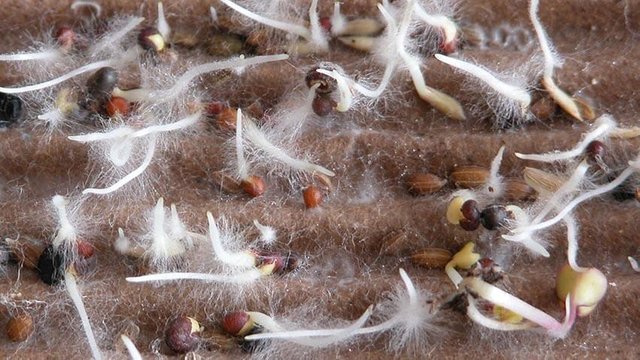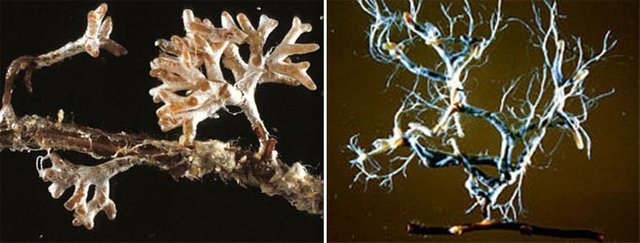What's Mycorrhiza in Agriculture
What’s mycorrhiza
A mycorrhiza is a symbiotic association between a fungus and a plant. The term mycorrhiza refers to the role of the fungus in the plant’s rhizosphere, its root system. Mycorrhizae play important roles in plant nutrition, soil microenvironment.
Mycorrhizal fungi have existed more than 450 million years, they appeared at the same time of the first plants appeared on dry land. “Myco” literally means “fungus” and “rhiza” means “root”, they form a network of filaments that associate with plant’s root system and develop a symbiotic association called “mycorrhiza”, thus plants and mycorrhizal fungi make up a single working network in nature.

How does it work
Mycorrhizal spores germinate when in contact with plant roots and form filaments (hyphae), which create a symbiotic relationship increasing the plants ability to uptake fixed nutrients and water, improving plant performance.
Mycorrhizal fungi increase the surface absorbing area of roots 100 to a 1,000 times, thereby greatly improving the ability of the plant to access soil resources. Mycorrhizal fungi increase nutrient uptake not only by increasing the surface absorbing area of the roots, but also release powerful enzymes into the soil that dissolve hard-to-capture nutrients, such as organic nitrogen, phosphorus, iron and other “tightly bound” soil nutrients.
Two groups of mycorrhiza

1. Endomycorrhizae

Endomycorrhizae forms symbiotic relationship with about 85% of plants, they penetrate into the root cortexs and form nutrient exchange structures within the root cells.Among the types of endomycorrhizal fungi, arbuscular mycorrhizal (AM) fungi are the most prevalent in soils.
2. Ectomycorrhizae

Ectomycorrhizal fungi do not penetrate into the root cell walls, they form a sheath around the root known as a fungal mantle as nutrient exchange network. Ectomycorrhizal fungi are mainly in forests ecosystems.
Benefits in agriculture
Mycorrhizae induce plants to absorb more nutrients and water from the soil. They also increase plant tolerance ability to various bad environmental stresses. In addition to this, Mycorrhizae also play an important role in soil structure process and stimulate beneficial microbial activity.Based on these two characteristics, we divided functions into two parts:
For Soil
- Increase soil’s water & nutrition holding capacity.
- Improve soil porosity and permeability.
- Develop soil microenvironment, promote higher microbial activity and nutrient cycling.
For Plants
- Increase roots establishment and survival at seeding or transplanting.
- Improve the plant’s mineral absorption capabilities, access many extra nutrient sources share with colonized plants.
- Increase plants resistance ability to soil diseases, virus, drought & salt stress and pests etc.
- Increase plants root system healthy development.
Simliar Products
The optimum supplements to mycorrhizae is Bacillus subtilis, Trichoderma harzianum
Mycorrhizae’s ability is to regulate biological diversity in soil, develop positive microenvironment.
Bacillus subtilis can improve plants uptake nutrients efficiency, increase roots growth and protect roots away from soil pathogens.
Trichoderma harzianum have super soil adaptability. Good effect on soil conditioner and control soil borne diseases. Also can increase root systems development.
In general, the more biological diversity of microorganisms, the more advantageous it is for growing.